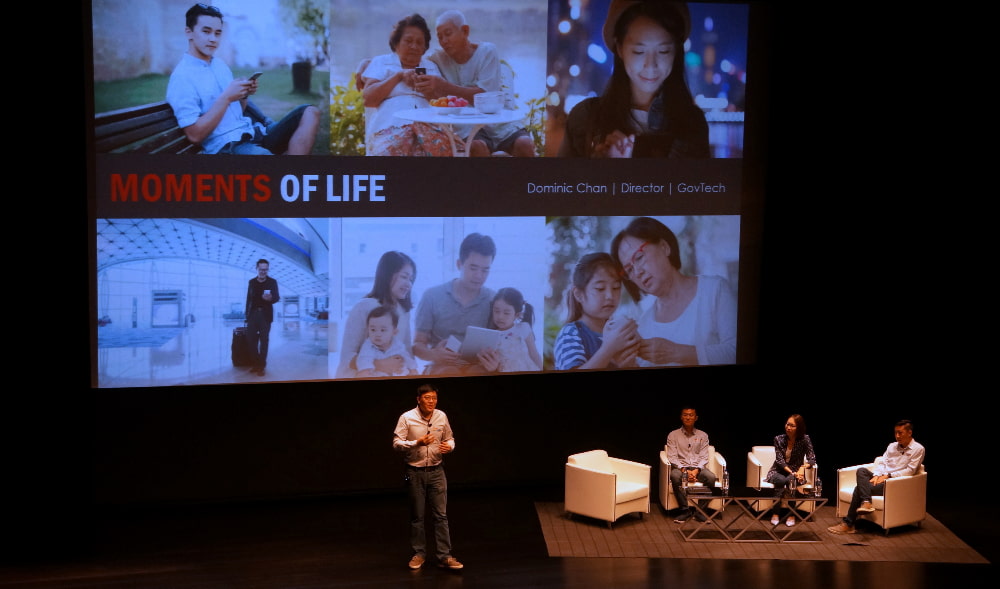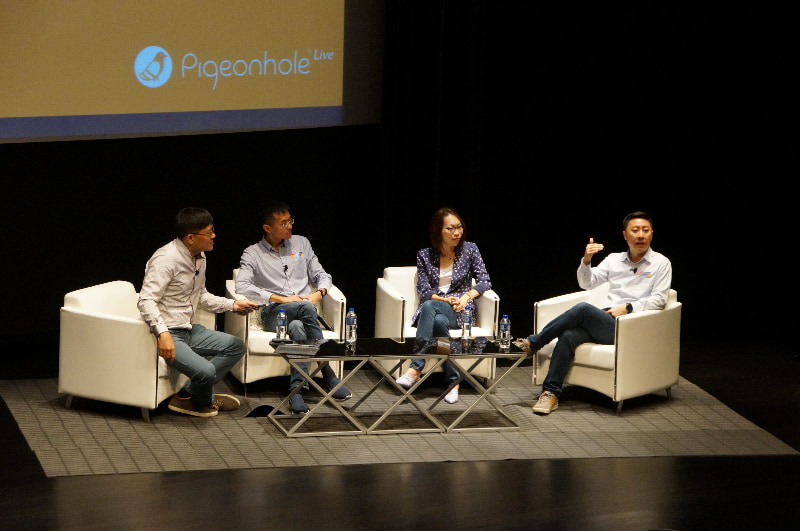The value of adopting a life moment approach for citizen centric services

At the Public Sector Transformation Conference, a panel of experts shared the benefits that organisations can reap from taking a life-moment approach in the design of services.
By now, you’ve probably heard about Industry 4.0, where digitalisation, data and automation are shaking up the way organisations operate. Less talked about is the concept of Services 4.0, which challenges leaders to shift their focus beyond just technical capabilities.
“Services 4.0 is about being end to end, thinking about the whole customer journey and making it frictionless, smooth and seamless,” explained Ms Jane Lim, assistant chief executive of the Info-communications Media Development Authority (IMDA) at a cross-agency panel discussion titled ‘The Value of Adopting a Life-Moment Approach for Citizen-Centric Services.’
The sharing session was part of the Public Sector Transformation Conference held at Our Tampines Hub on 18 July 2019. Ms Lim was joined on the panel by Mr Dominic Chan, director of the Moments of Life platform, Government Technology Agency of Singapore (GovTech); Mr Eugene Toh, director of the Pro-Enterprise Division at the Ministry of Trade and Industry; and Mr Tan Chia Han, assistant commissioner of police, Singapore Police Force.

Keep it simple, seamless
At its core, a life-moment approach to creating digital services involves mapping out all of a customer’s interactions with an organisation at a specific time of need, effectively creating a customer journey. In doing so, organisations can “untie knots in policies and processes [and encourage] collaboration across different agencies [or business units],” said Mr Chan.
This is very different from how the government used to operate, noted Mr Toh, adding that services for citizens tended to be organised along agency lines. “Processes were pretty efficient within each agency… but there were gaps in the way the customer journey flowed between agencies,” he said, illustrating his point by highlighting how cumbersome it used to be for prospective restaurateurs to establish their businesses.
Before the government adopted a life-moment approach, a would-be restaurant owner had to approach the Urban Redevelopment Authority to obtain a change-of-use permit for a premise, the Singapore Food Authority to get a food shop license, the Accounting and Corporate Regulatory Authority to incorporate the business, and so on. In total, there were 14 separate touchpoints spanning multiple agencies, making for a frustrating experience when interacting with the government.
All this changed with the life-moment approach. With some process re-engineering around the client [prospective restaurant owners], MTI was able to cut down 845 fields that needed to be filled into about 90 and reduced the entire application process to a single touchpoint. This led to tangible benefits for applicants, such as cost savings from not having to pay certain fees and less time spent on each transaction. “Hopefully, this leaves enterprise owners with a better experience when carrying out regulatory transactions with the government,” he quipped.
Personal, predictive and preventive
Yet another advantage that the life-moment approach brings to organisations is the ability to personalise its services. A company may offer its clients many products, but not all of those products are relevant to each customer. In the context of government digital services, for instance, young parents who just welcomed a new child into their lives would need different services from an elderly person.
“[For example] we can use citizen information that [the government] has collected and stored on MyInfo to understand citizens, make recommendations to them, as well as personalise services for them,” Mr Chan elaborated. “To drive this, we have to build new capabilities in data analytics, machine learning, and deep learning.”
In addition to personalisation, Ms Lim emphasised that the life-moment approach towards provision of services could allow organisations to predict clients’ needs and prevent problems from happening. “That will be the way forward to provide a delightful experience and lower the friction for users,” she said.
Tapping into a supportive ecosystem
Delighting users sometimes requires finding synergies with partners outside your organisation, and this should be embraced rather than feared, said the panel. Ms Lim made the case for such partnerships with the example of how banks can now tap on MyInfo to onboard customers more efficiently.
Mr Tan also experienced the effectiveness of playing off the strengths of partners during his secondment to Lazada, which is owned by China’s Alibaba Group. “The Alibaba ecosystem is bigger than just Alibaba alone. It consists of Alibaba, buyers, merchants, logistics service providers and professional service providers, including companies that help merchants list and market their products, as well as manage their inventories and customer feedback, on e-commerce platforms.”
A life-moment approach could, therefore, help organisations identify specific areas in their operations for partners to value-add to, ultimately resulting in better customer experiences and, perhaps, even new business opportunities.
“Finally, it’s crucial not to shy away from customer engagement. For example, Lazada frequently hosts seller conferences, where the managers meet up with the merchants in person to share the latest initiatives, hear their feedback and understand their pain points. Customer feedback channels are prompt and responsive, and feedback is treated seriously,” Mr Tan said.

